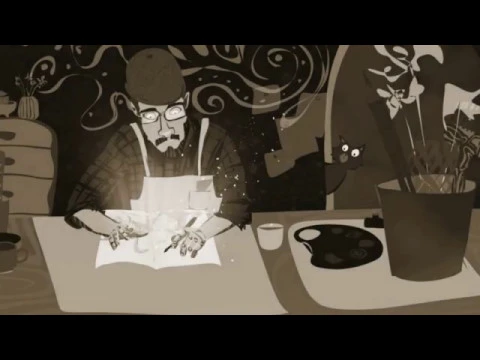
A narrative-driven single player adventure set in a nebulous, unknown land. Uncover the story of Nola, as she climbs a mysterious tower, solves puzzles and combats shadows in quest of self-awareness and overcoming a deep-rooted depression.
Trailer
Goals
The team had a clear mission: to create a game about true empowerment. Unlike many titles on the market, we didn't want to achieve this goal by creating yet another power fantasy in which the player slaughters through bulks of cannon-fodder enemies. Instead, we wanted to strictly focus on storytelling, introduce illustration as a narrative device and reduce gameplay to the essential in order to set the stage for a tale about a young woman facing her own demons.
Specs
Screenshots
My Tasks
Introduction
Nola was the first project where I was supposed to actually be a programmer now. Prior to this project, I was always a designer who happened to be able to code. We had 2 programmers on this project. The lead programmer who handled the character controller, enemy AI, input, and porting to the Xbox One. Meanwhile, I was responsible for the camera handling and a trigger and interactable system so that the player could, e.g., pick up a lantern.
I was also yet again responsible for creating the GUI, at least for the main menu, since the main game doesn't make much use of UI elements.
On top of all of that, I was also in charge of creating VFX and shaders for this project. The first time I dove deeper into shader programming and learning how particles behave.
Trigger/Interactable System
A core mechanic of a lot of games is being able to interact with things around the player. And this game was the first time I tried to create such a system. From detecting an object around the player to showing a prompt on the screen to the actual event that is getting fired and handled.
This interactable system laid the base for the kind of systems I would create later for games like Arknet: Singularity or CACTUS.
Source: Youtube (Z9GN)
Technical Art
Since no one in the team had much experience with particles or shaders, I took it upon myself to learn how those things work in Unity. Shaders were something I was highly intrigued by. I kept reading and hearing people talking about shaders being black magic and hard to understand.
In the end, I created a simple shader to make invisible geometry visible around the player with a ghostly appearance. Additionally, I created the dark shadow particles for the enemies and a bunch of smaller particles floating around here and there.


Source: Youtube (Z9GN)
Post Mortem
The project was pretty laid back. I had a lot of time to learn new things and actually think about what I am doing and how things work instead of blindly following online articles and tutorials. I dove deeper into creating systems, signals, and utilizing patterns in C#.
Seeing pictures and videos of the game today makes me want to overhaul the whole lighting of the game again, but for my 3rd student project, it is still pretty solid. Maybe a bit too dark at times.
The Lightbaking Incident
A small story I would like to share, since it makes me laugh to this day.
The very first scene in the game was quite big. It was the start of the game on a small island with a big tower at the end of it. The island was full of foliage, rocks, and all sorts of details. We created the island with the terrain tools present in Unity, so far so easy.
The island was surrounded by a massive plane of water. It might not sound like much, but it was quite a big scene. Not big, as in a big area or open world. More like, as in a lot of objects have been placed. Yet, I wouldn't say that the scene was too complicated for a light bake.
So when we tried to bake the scene, it took ages, and it would crash constantly. One day I left in the evening like every other day. And when I came back the next morning, a couple of my team members were just sitting in the room, visibly tired. They have waited for the bake to finish throughout the whole night, and it still wasn't done when I arrived. It eventually finished, and now we had two options:
1) Keep the scene as it is and never make any changes to it so we don't risk having to bake again.
2) Maybe try to investigate why the bake takes so insanely long.
We thought to ourselves that light baking simply takes this long. It was the first time we had a more complex scene at hand and heard stories of games and movies taking days as well to bake lights or render frames with a whole render farm.
So when I eventually checked out the scene and the lightbake settings, it struck me… I saw that our polygon counter was insanely high. Our scene might be big and complex… but not THIS COMPLEX. So I investigated more and somehow… Someone… Some time ago… duplicated every single environment object in the scene!
Not only did it tank the performance, but it also caused the lightbake to take ridiculously long. So after cleaning up the scene, everything eventually worked way faster.
Welp, that was a night of no sleep for some of us.
I had a good night. :)






